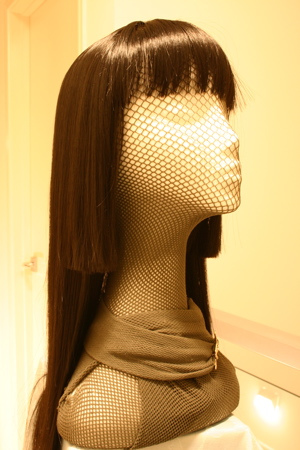A wig is a head of hair made from horse hair,human hair wool feathers, yak hair, buffalo hair, or synthetic materials which is worn on the head for fashion or various other aesthetic and stylistic reasons, including cultural and religious observance. The word wig is short for periwig and first appeared in the English language around 1675.
The ancient Egyptians wore them to shield their shaved, hairless heads from the sun. The Egyptians also wore the wigs on top of their hair using beeswax and resin to keep the wigs in place. Other ancient cultures, including the Assriens, Peniocans, Greeks and Romans, also used wigs. Wigs are principally a Western form of dress—in the Far East they have rarely been used except in the traditional Theatre of China and Japan. Some East Asian entertainers (Japanese Geisha, Korean Kisagne) wore wigs (Katsura and Gacha respectively) as part of their traditional costumes.
16th and 17th century
After the fall of the Roman Empire, the use of wigs fell into abeyance in the West for a thousand years until revived in the 16th century as a means of compensating for hair loss or improving one's personal appearance. They also served a practical purpose: the unhygienic conditions of the time meant that hair attracted head lice, a problem that could be much reduced if natural hair were shaved and replaced with a more easily de-loused artificial hairpiece. Fur hoods were also used in a similar preventative fashion.
MILITRY WIGS
From the late 17th to early 19th centuries, European armies wore uniforms more or less imitating the civilian fashions of the time, but with militarized additions. As part of that uniform, officers wore wigs more suited to the drawing rooms of Europe than its battlefields. The late 17th Century saw officers wearing full-bottomed natural-coloured wigs, but the civilian change to shorter, powdered styles with pigtails in the early 18th Century saw officers adopting similar styles. The elaborate, over-sized court-styles of the late 18th Century were not followed by armies in the field however, as they were impractical to withstand the rigours of military life and simpler wigs were worn.
Whilst officers normally wore their own hair short under a powdered wig, the rank and file of the infantry were not afforded such luxury. Instead of wigs, the men grew their hair long and according to the prevailing fashion in a nation’s army, hair was either allowed to grow long with simple modeling, as in the French army of the 1740s, or else was elaborately coiffured as in Prussian and British armies. In the case of British soldiers of the 1740s, contemporary artwork suggests that they cut their hair short, which was not the case. Instead, the men used tallow or other fat to grease the hair, which was then fashioned into pigtails and tied back into the scalp hair to give the impression of short hair. It was then liberally dusted with powdered chalk to give the impression of a powdered wig. Later in the century, hair was likewise tied back, greased and powdered, but false hair pigtails were adopted, kept in a tubular queue and tied back with ribbons to the soldier’s own hair. The overall effect was that of a wig with a long tail and bow. The Prussian army took personal hairstyles to an extreme during the time of Fredrick the great ,each soldier commonly having a long pigtail hanging down the back nearly to waist level.





had to leave comment so heyahh xxx
ReplyDelete